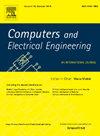Cross-domain recommender systems via multimodal domain adaptation
IF 4
3区 计算机科学
Q1 COMPUTER SCIENCE, HARDWARE & ARCHITECTURE
引用次数: 0
Abstract
Collaborative Filtering (CF) has emerged as one of the most prominent implementation strategies for building recommender systems. The key idea is to exploit the usage patterns of individuals to generate personalized recommendations. CF techniques, especially for newly launched platforms, often face a critical issue known as the data sparsity problem, which greatly limits their performance. Cross-domain CF alleviates the problem of data sparsity by finding a common set of entities (users or items) across the domains, which then act as a conduit for knowledge transfer. Nevertheless, most real-world datasets are collected from different domains, so they often lack information about anchor points or reference information for entity alignment. This paper introduces a domain adaptation technique to align the embeddings of entities across domains. Our approach first exploits the available textual and visual information to independently learn a multi-view latent representation for each entity in the auxiliary and target domains. The different representations of the entity are then fused to generate the corresponding unified representation. A domain classifier is then trained to learn the embedding for the domain alignment by fixing the unified features as the anchor points. Experiments on four publicly available benchmark datasets indicate the effectiveness of our proposed approach.
求助全文
约1分钟内获得全文
求助全文
来源期刊

Computers & Electrical Engineering
工程技术-工程:电子与电气
CiteScore
9.20
自引率
7.00%
发文量
661
审稿时长
47 days
期刊介绍:
The impact of computers has nowhere been more revolutionary than in electrical engineering. The design, analysis, and operation of electrical and electronic systems are now dominated by computers, a transformation that has been motivated by the natural ease of interface between computers and electrical systems, and the promise of spectacular improvements in speed and efficiency.
Published since 1973, Computers & Electrical Engineering provides rapid publication of topical research into the integration of computer technology and computational techniques with electrical and electronic systems. The journal publishes papers featuring novel implementations of computers and computational techniques in areas like signal and image processing, high-performance computing, parallel processing, and communications. Special attention will be paid to papers describing innovative architectures, algorithms, and software tools.
 求助内容:
求助内容: 应助结果提醒方式:
应助结果提醒方式:


